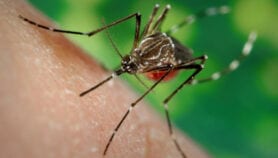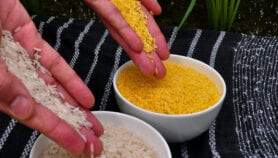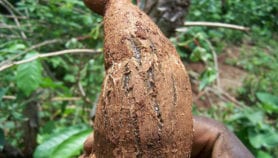By: Priya Shetty
Send to a friend
The details you provide on this page will not be used to send unsolicited email, and will not be sold to a 3rd party. See privacy policy.
A molecule discovered in the gut of a microscopic worm could help researchers protect crops from insect pests and develop new ways of treating parasitic infections in people, according to research in the latest issue of Science.
Researchers, led by Raffi Aroian of the University of California — San Diego, United States, say the molecule makes roundworms and insects vulnerable to a natural toxin called Bt.
The Bt toxin ‘recognises’ the molecule’s shape and attaches itself. This leads to the insect or worm’s gut rupturing and the animal dying.
Organic farmers use the Bt toxin, which comes from a bacterium called Bacillus thuringiensis, to ward off crop pests. It is also used in crops that have been genetically modified to resist attack by insects. However, both approaches carry the risk of insects developing resistance to the poison.
Aroian told SciDev.Net that his team’s work could allow such resistance to be monitored, as researchers would be able to look out for changes in the structure of the molecule that the Bt toxin latches onto.
Any change to the structure could mean that the insect is no longer susceptible to the toxin. Farmers could use this information to alter practices in the local area to prevent the spread of resistance. Aroian suggests that combining pesticides that target different molecules could also slow the development of resistance.
The researchers also believe that the Bt toxin — which is harmless to humans — could be used to treat parasitic roundworm infections in people. The developing world is most heavily-affected by these parasites, which include the worms that cause river blindness and elephantiasis.
Aroian says the low cost of making pills containing the Bt toxin would make such a therapy accessible to people in developing countries.
Link to full research paper in Science
Reference: Science 307, 922 (2005)













